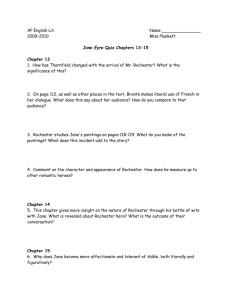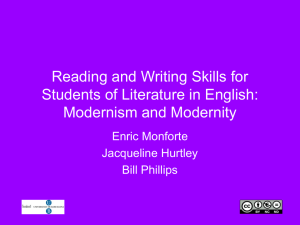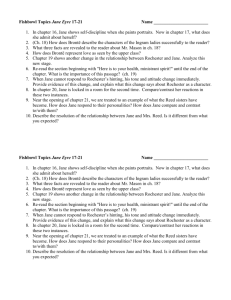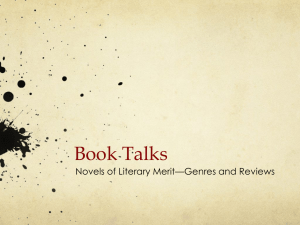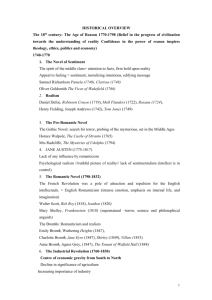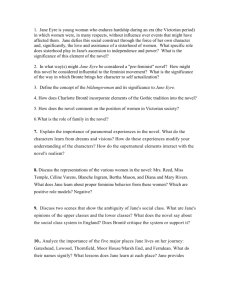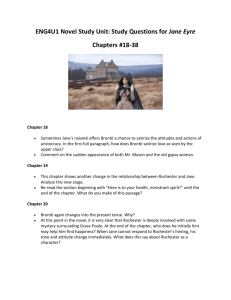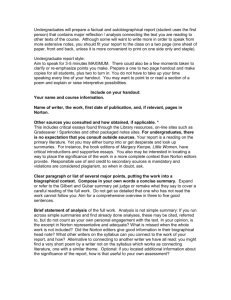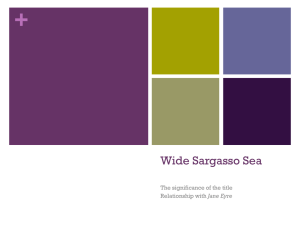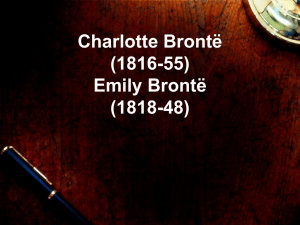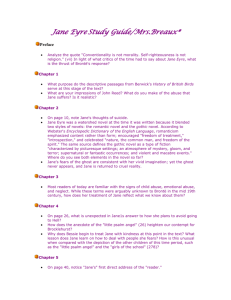Jane Eyre Fishbowl Topics 36-end
advertisement
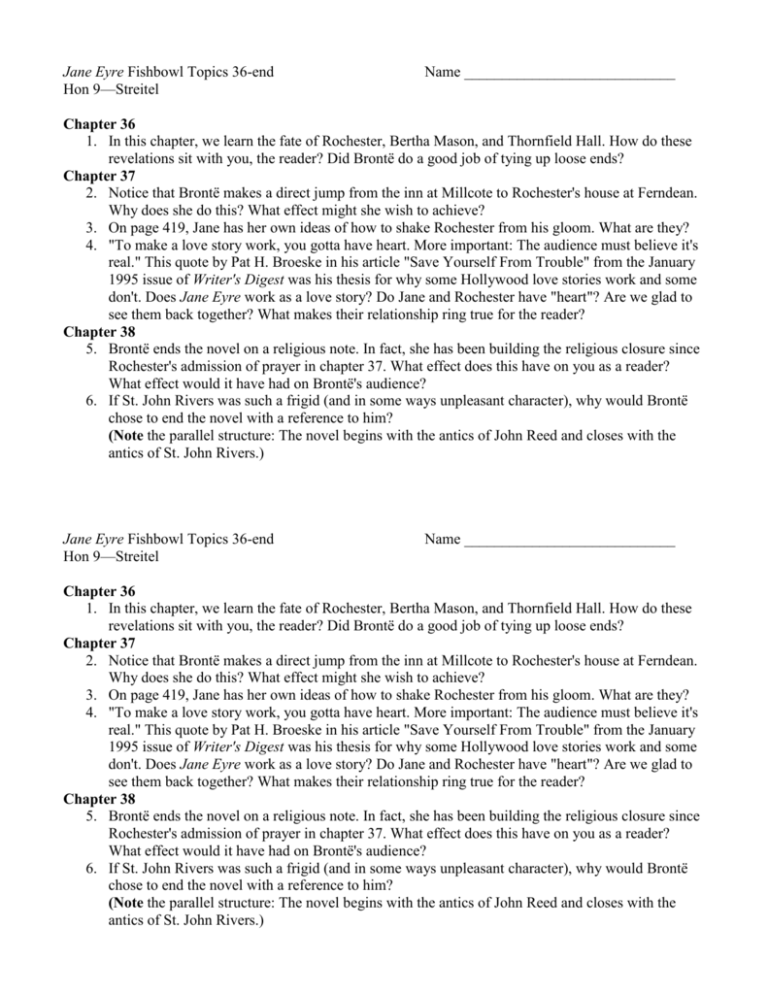
Jane Eyre Fishbowl Topics 36-end Hon 9—Streitel Name ____________________________ Chapter 36 1. In this chapter, we learn the fate of Rochester, Bertha Mason, and Thornfield Hall. How do these revelations sit with you, the reader? Did Brontë do a good job of tying up loose ends? Chapter 37 2. Notice that Brontë makes a direct jump from the inn at Millcote to Rochester's house at Ferndean. Why does she do this? What effect might she wish to achieve? 3. On page 419, Jane has her own ideas of how to shake Rochester from his gloom. What are they? 4. "To make a love story work, you gotta have heart. More important: The audience must believe it's real." This quote by Pat H. Broeske in his article "Save Yourself From Trouble" from the January 1995 issue of Writer's Digest was his thesis for why some Hollywood love stories work and some don't. Does Jane Eyre work as a love story? Do Jane and Rochester have "heart"? Are we glad to see them back together? What makes their relationship ring true for the reader? Chapter 38 5. Brontë ends the novel on a religious note. In fact, she has been building the religious closure since Rochester's admission of prayer in chapter 37. What effect does this have on you as a reader? What effect would it have had on Brontë's audience? 6. If St. John Rivers was such a frigid (and in some ways unpleasant character), why would Brontë chose to end the novel with a reference to him? (Note the parallel structure: The novel begins with the antics of John Reed and closes with the antics of St. John Rivers.) Jane Eyre Fishbowl Topics 36-end Hon 9—Streitel Name ____________________________ Chapter 36 1. In this chapter, we learn the fate of Rochester, Bertha Mason, and Thornfield Hall. How do these revelations sit with you, the reader? Did Brontë do a good job of tying up loose ends? Chapter 37 2. Notice that Brontë makes a direct jump from the inn at Millcote to Rochester's house at Ferndean. Why does she do this? What effect might she wish to achieve? 3. On page 419, Jane has her own ideas of how to shake Rochester from his gloom. What are they? 4. "To make a love story work, you gotta have heart. More important: The audience must believe it's real." This quote by Pat H. Broeske in his article "Save Yourself From Trouble" from the January 1995 issue of Writer's Digest was his thesis for why some Hollywood love stories work and some don't. Does Jane Eyre work as a love story? Do Jane and Rochester have "heart"? Are we glad to see them back together? What makes their relationship ring true for the reader? Chapter 38 5. Brontë ends the novel on a religious note. In fact, she has been building the religious closure since Rochester's admission of prayer in chapter 37. What effect does this have on you as a reader? What effect would it have had on Brontë's audience? 6. If St. John Rivers was such a frigid (and in some ways unpleasant character), why would Brontë chose to end the novel with a reference to him? (Note the parallel structure: The novel begins with the antics of John Reed and closes with the antics of St. John Rivers.)
